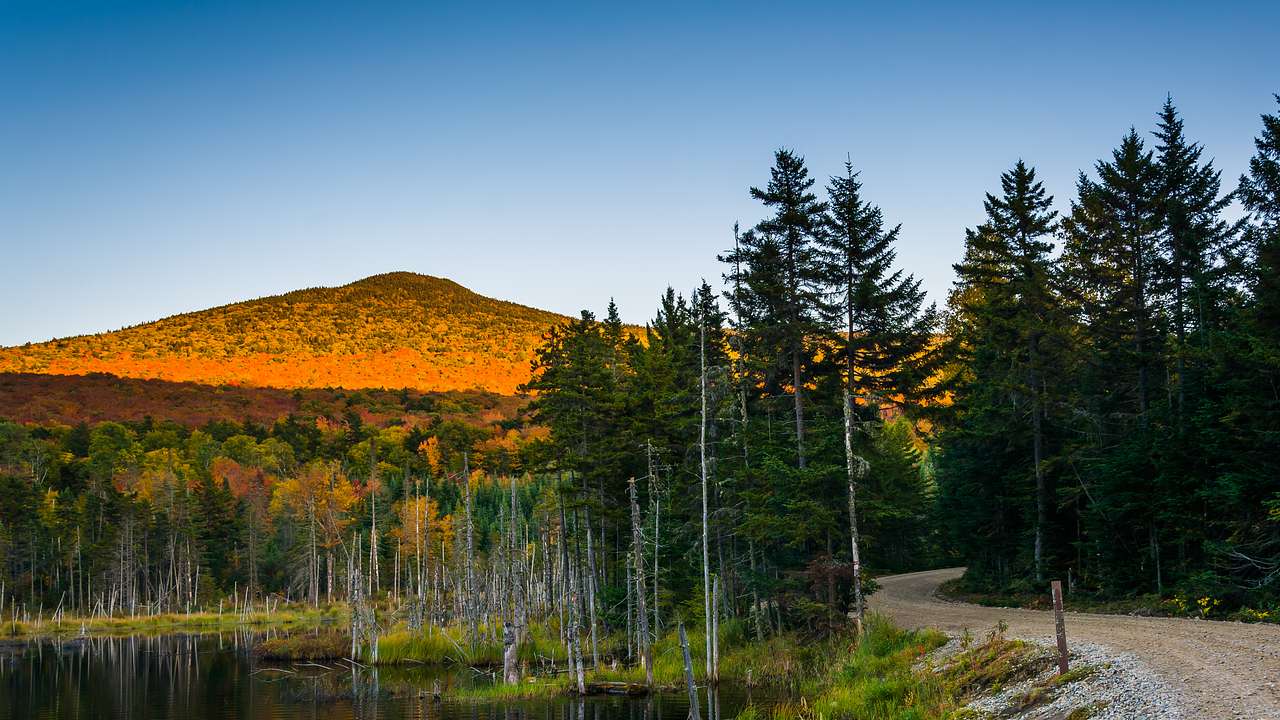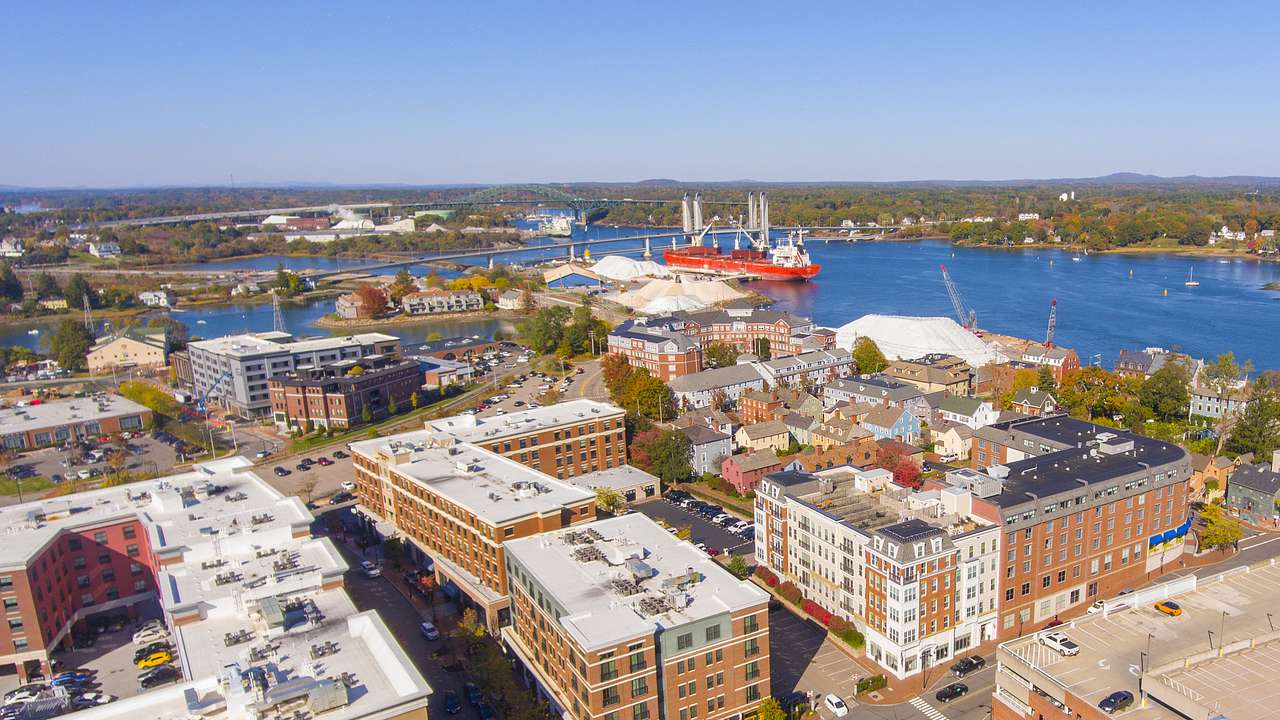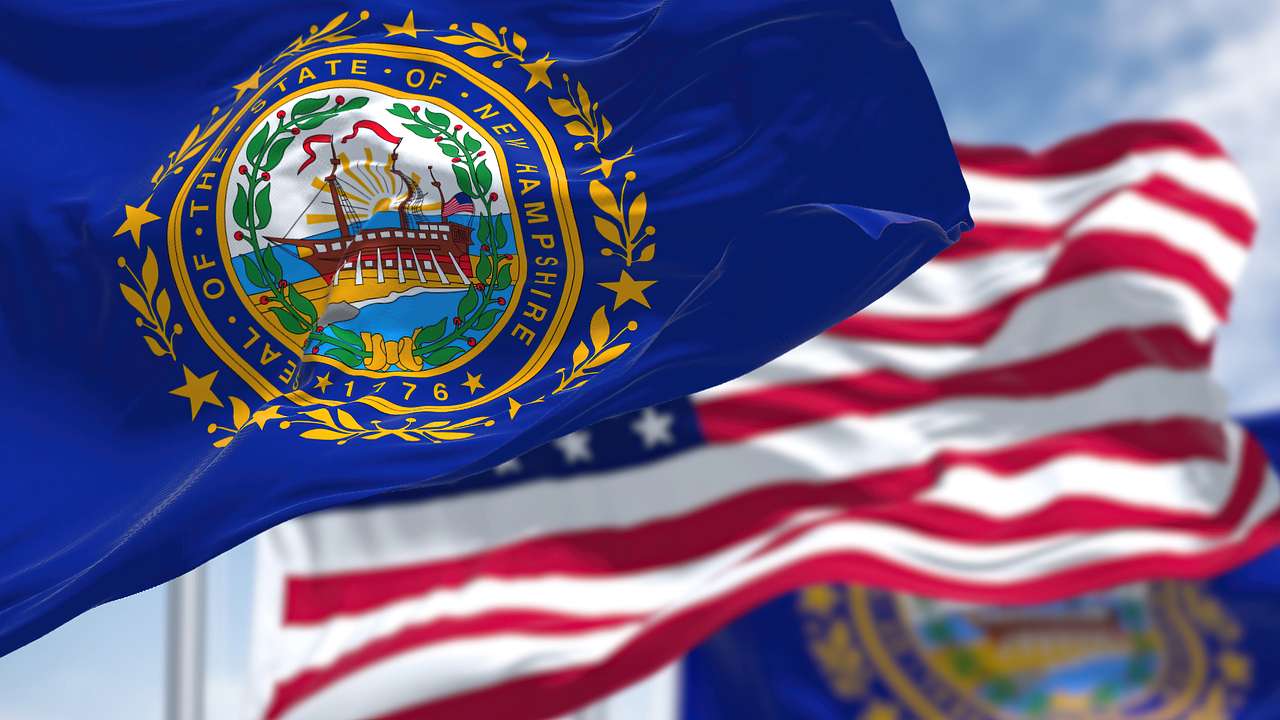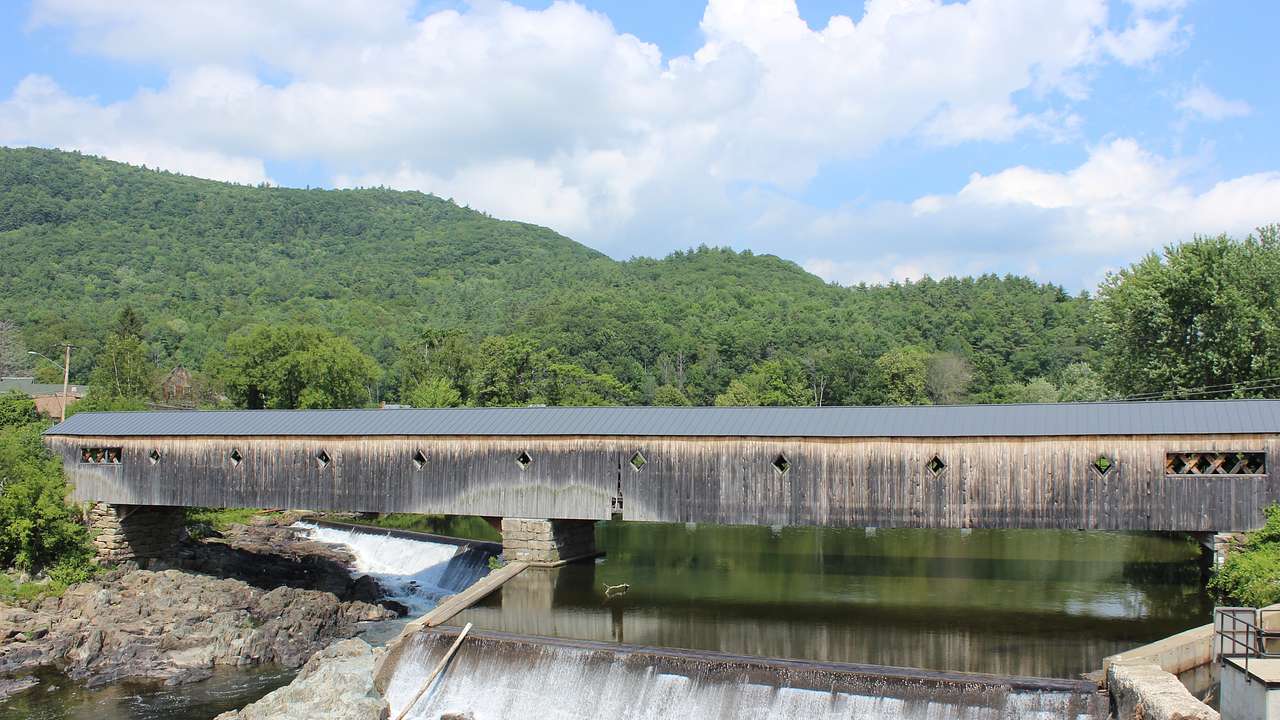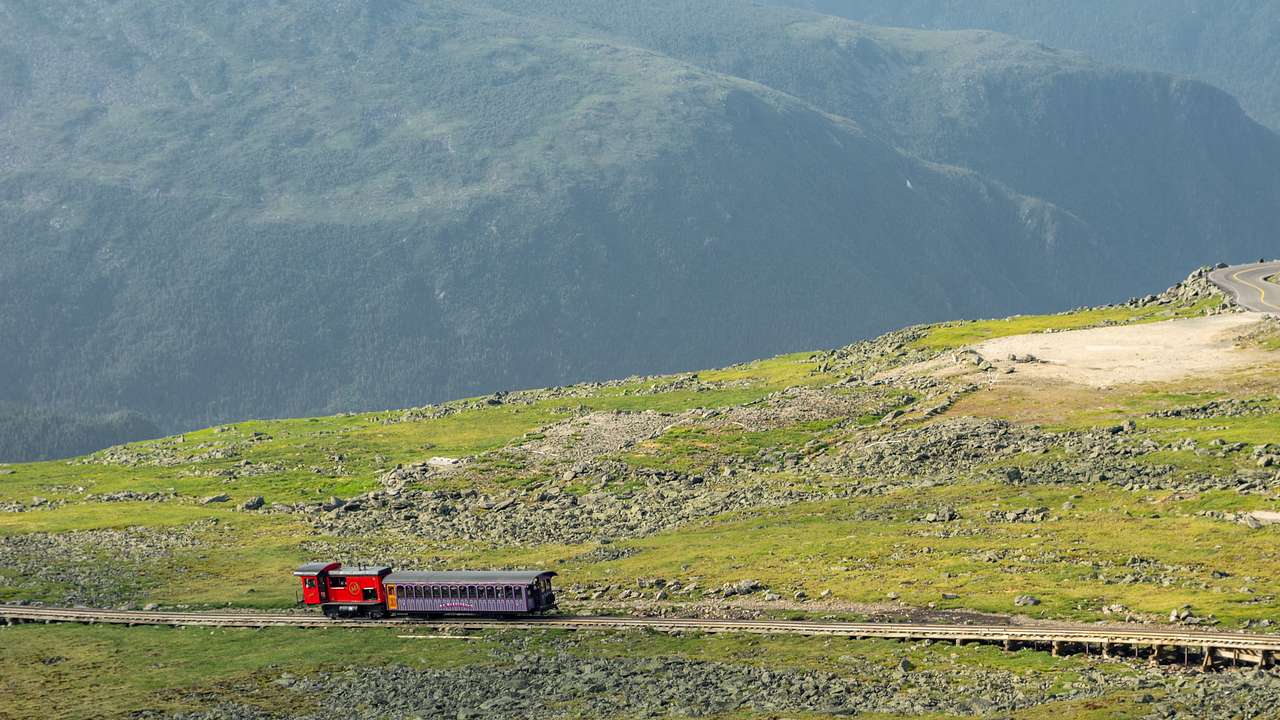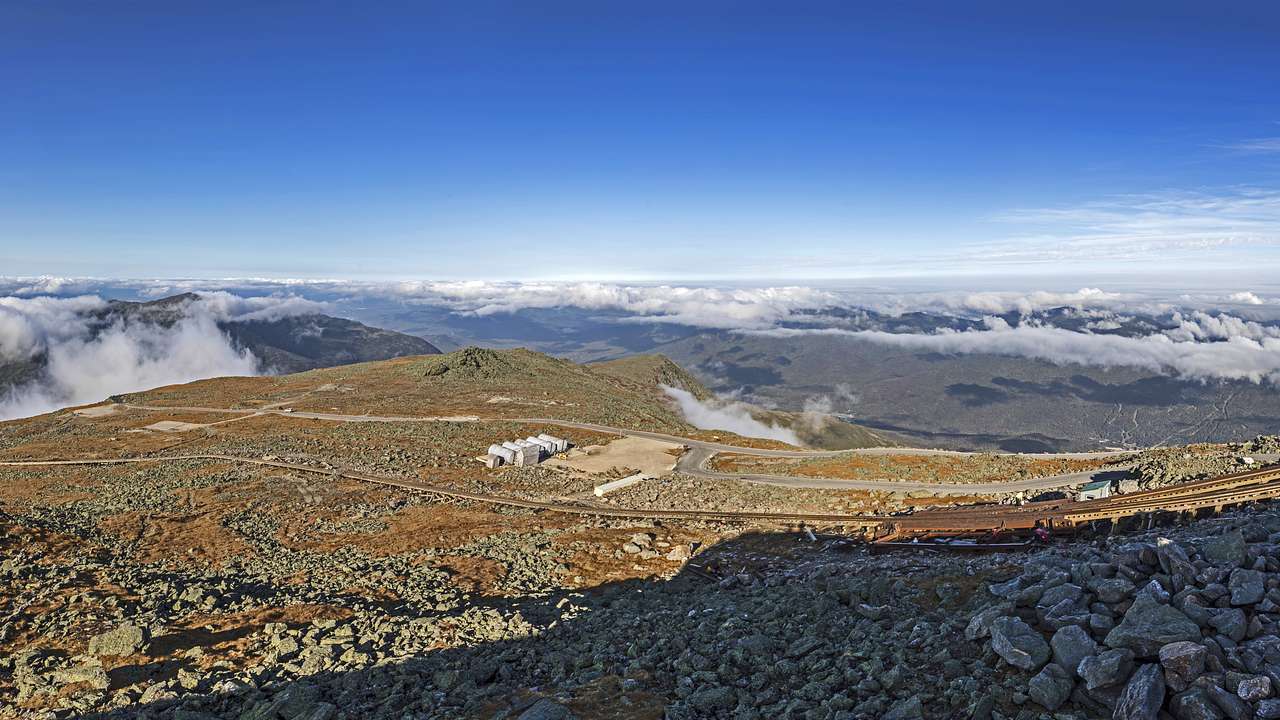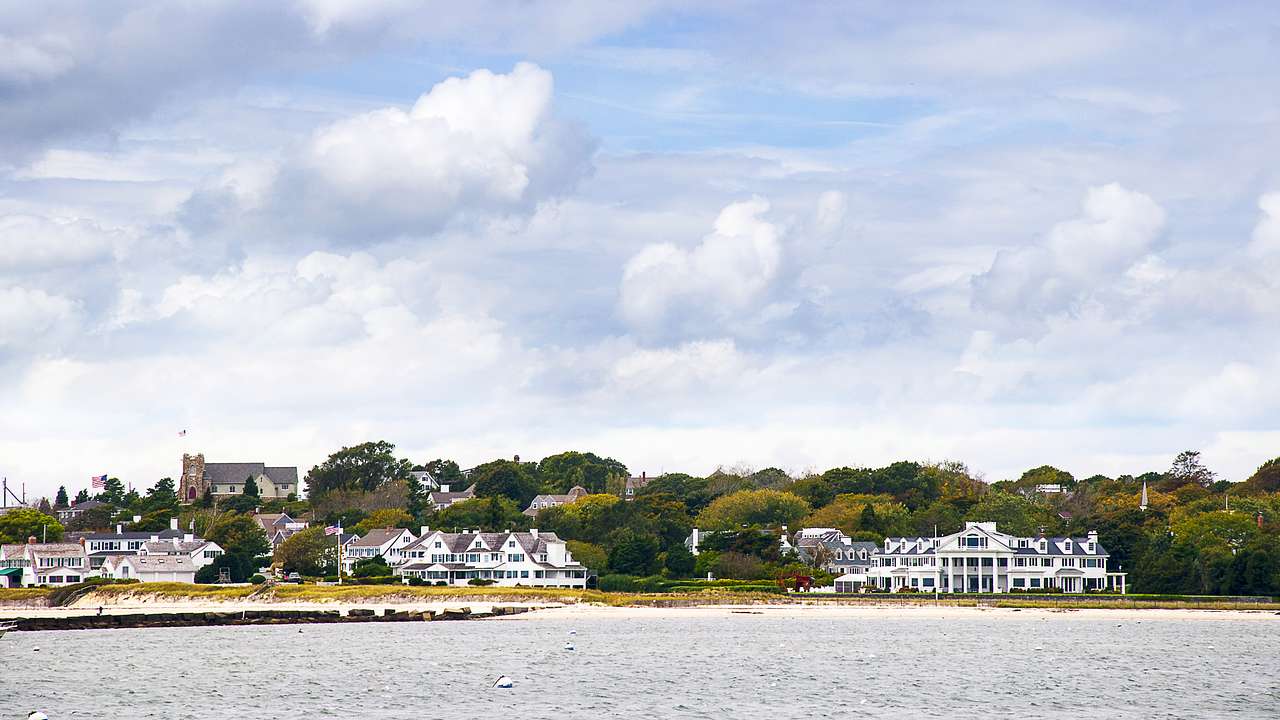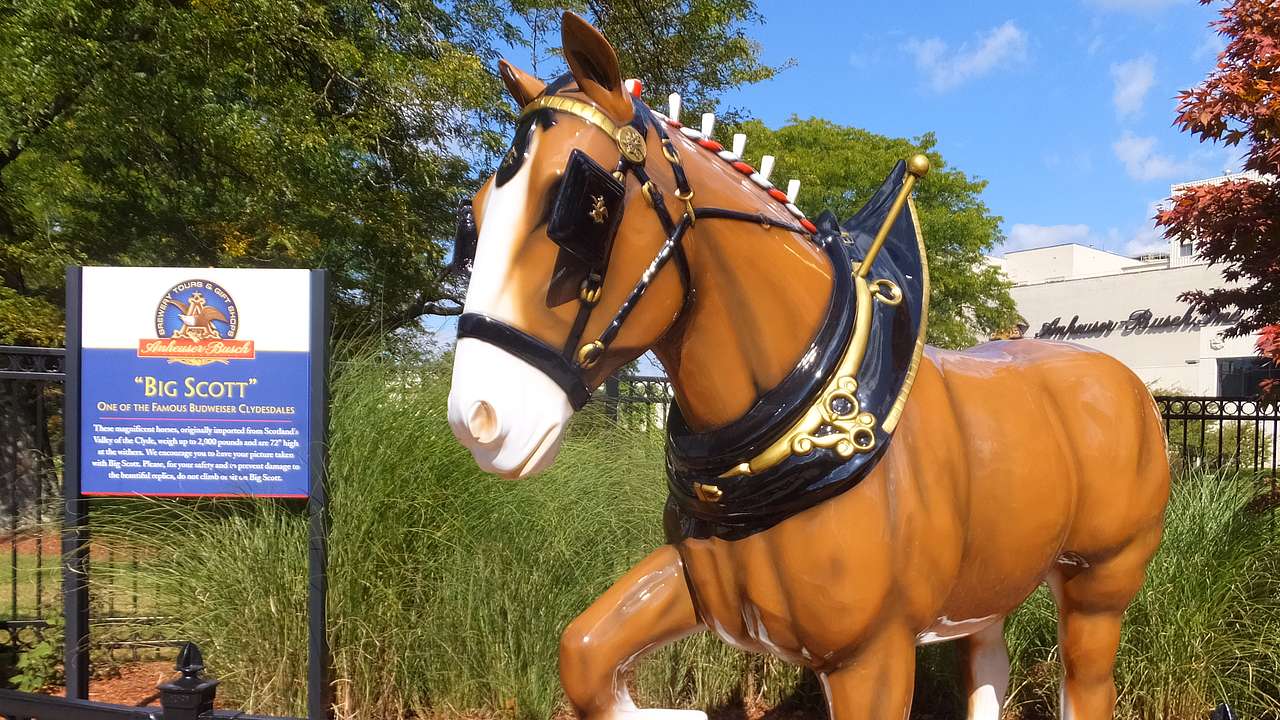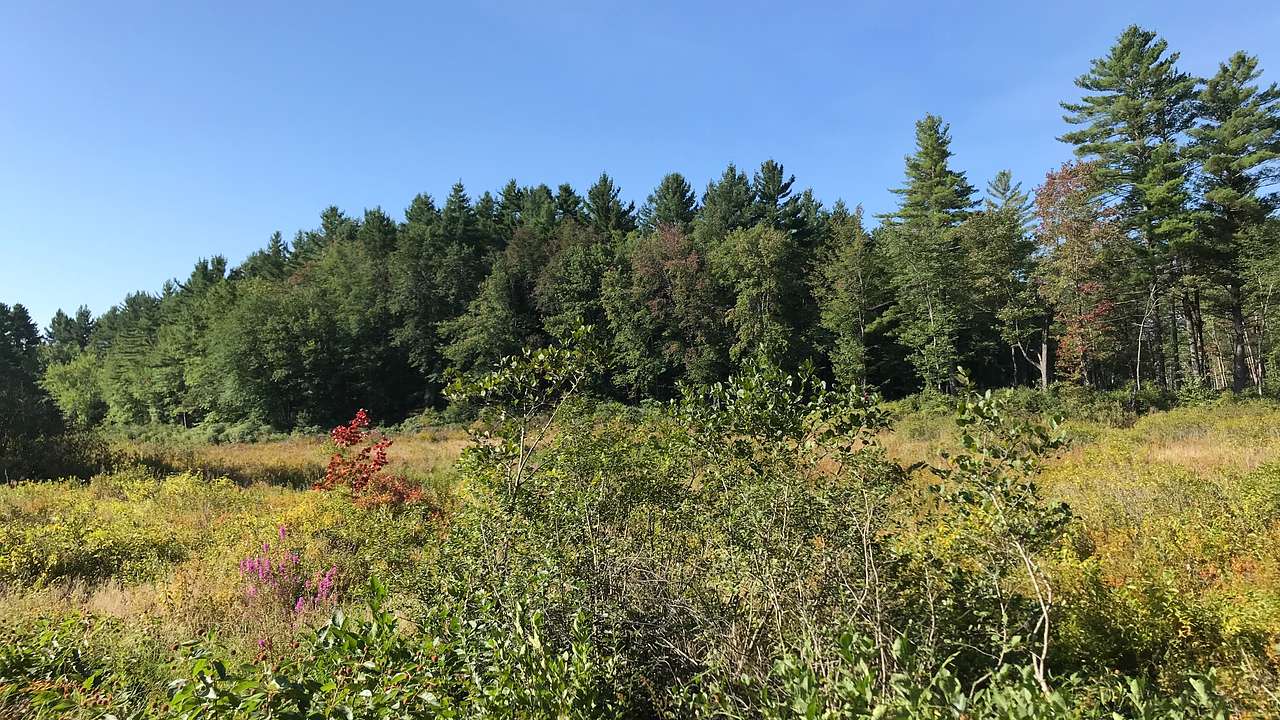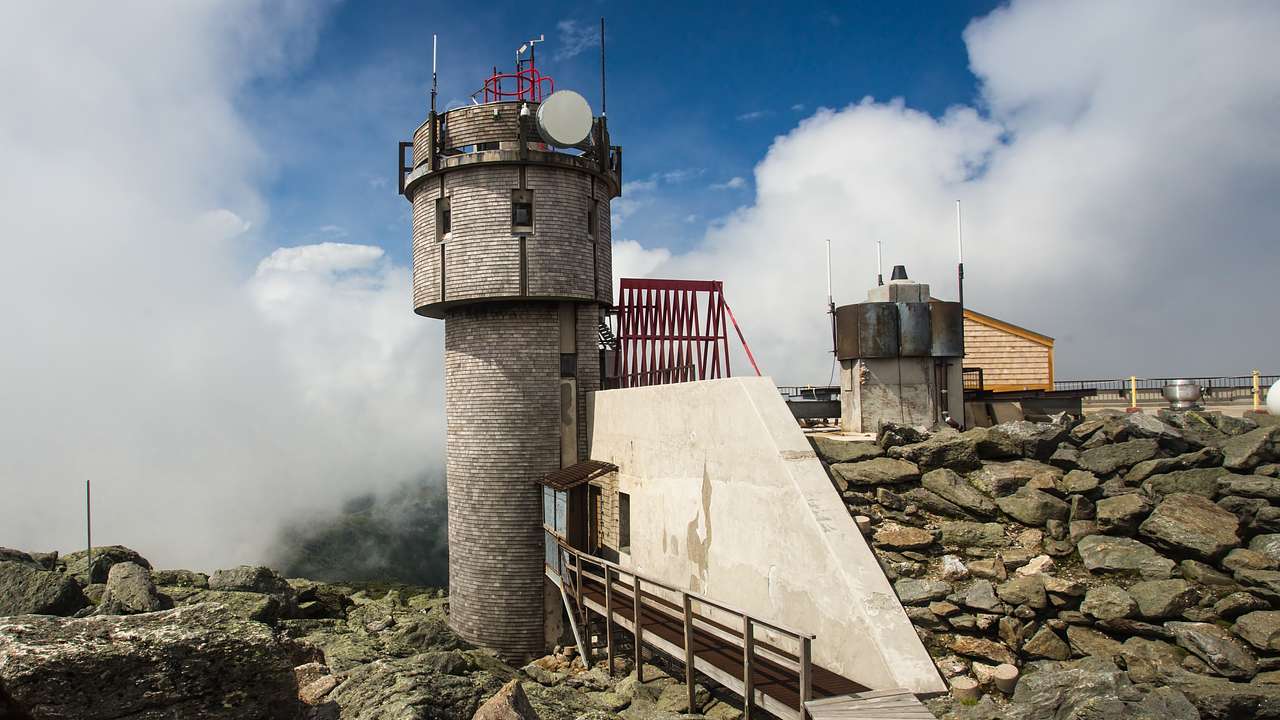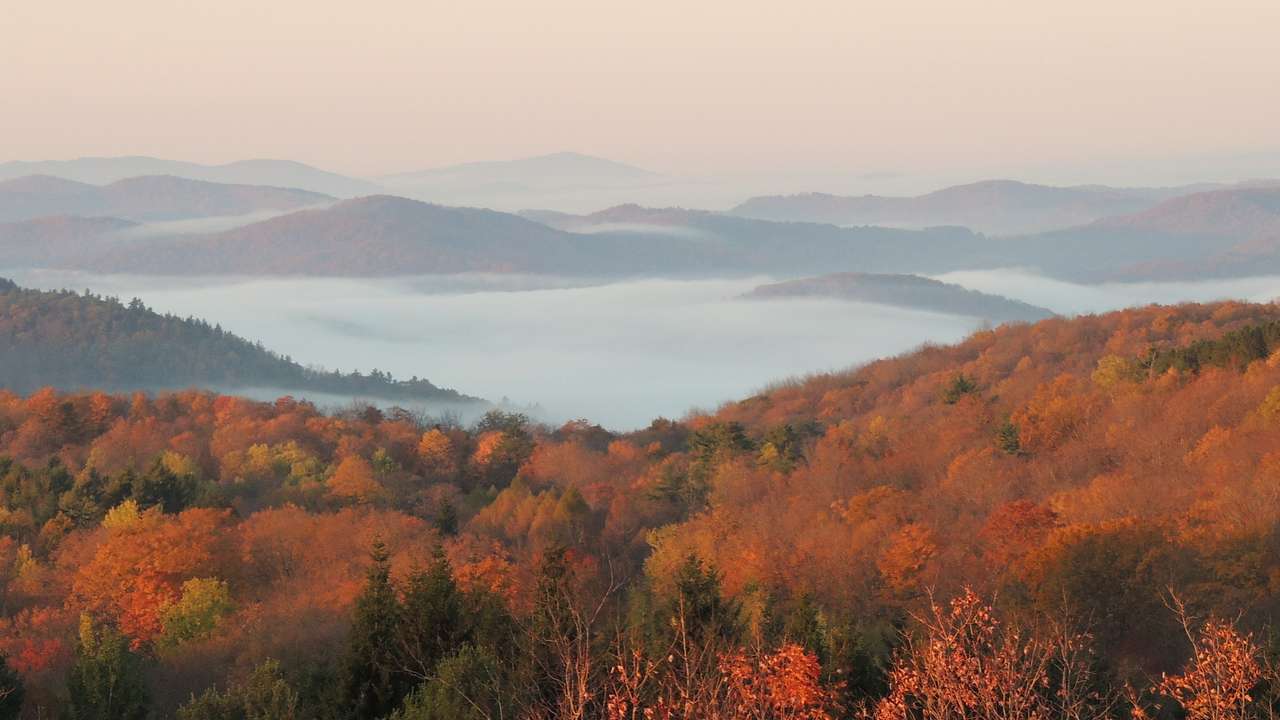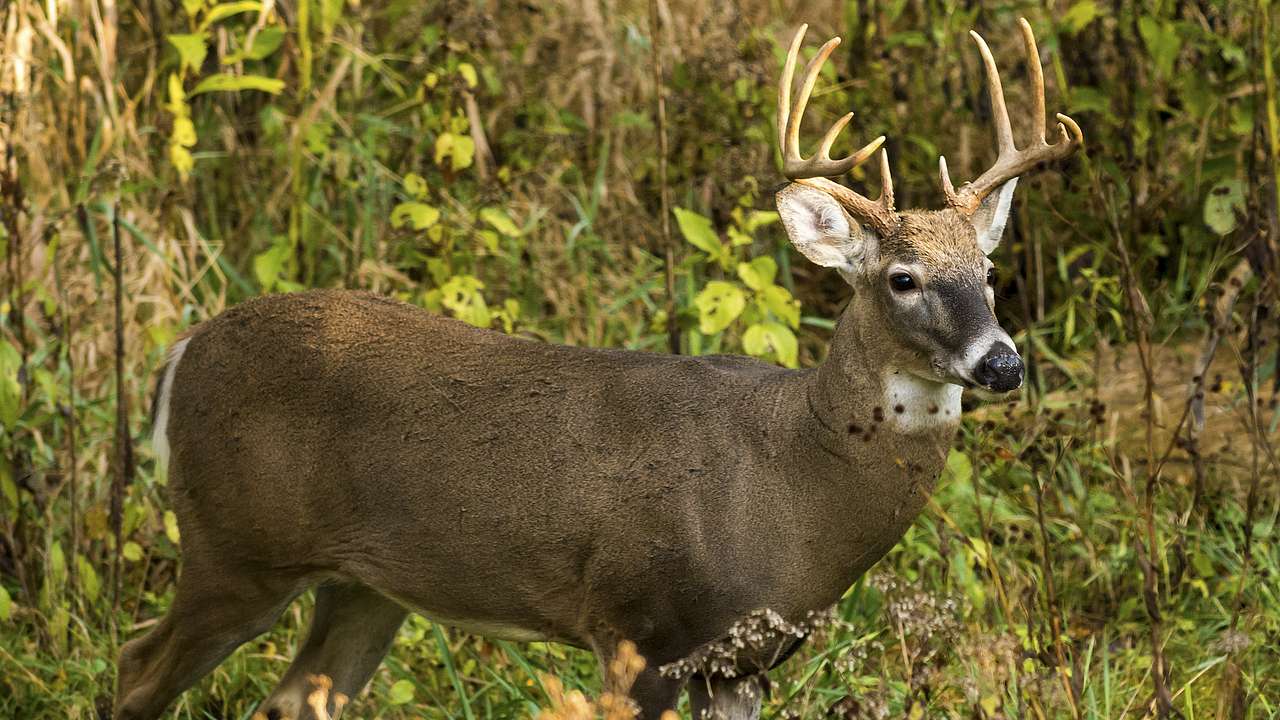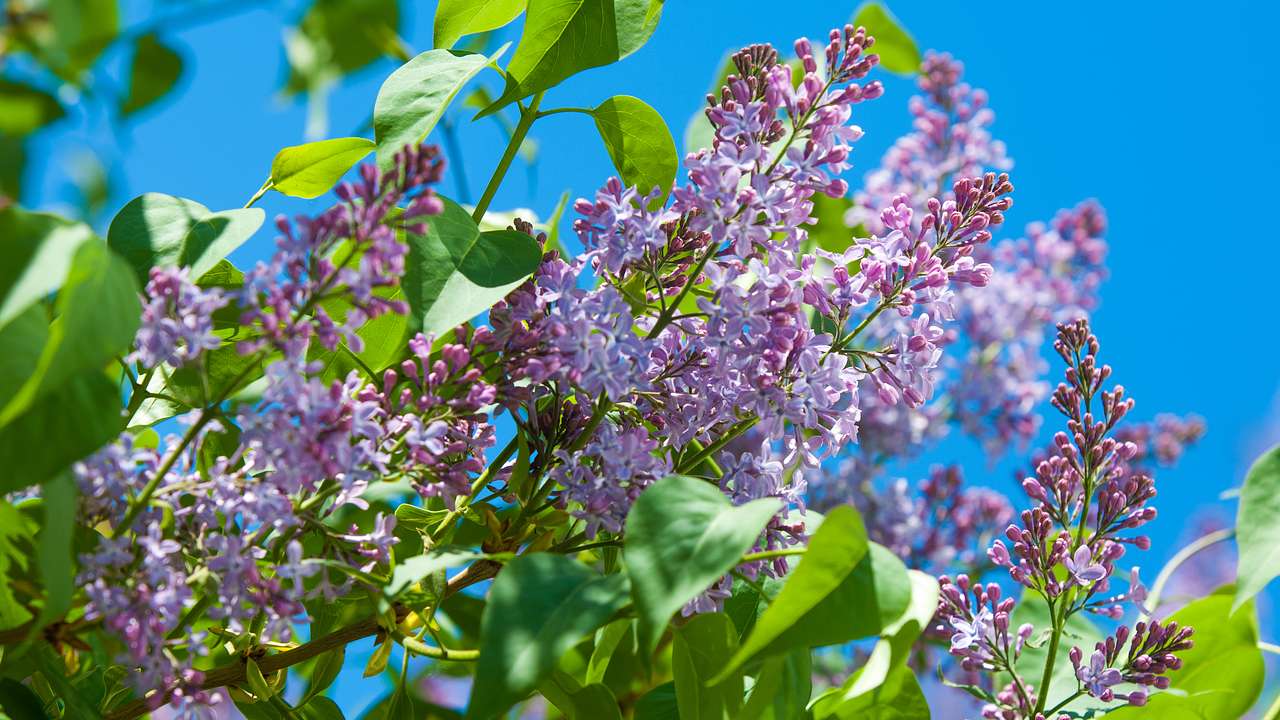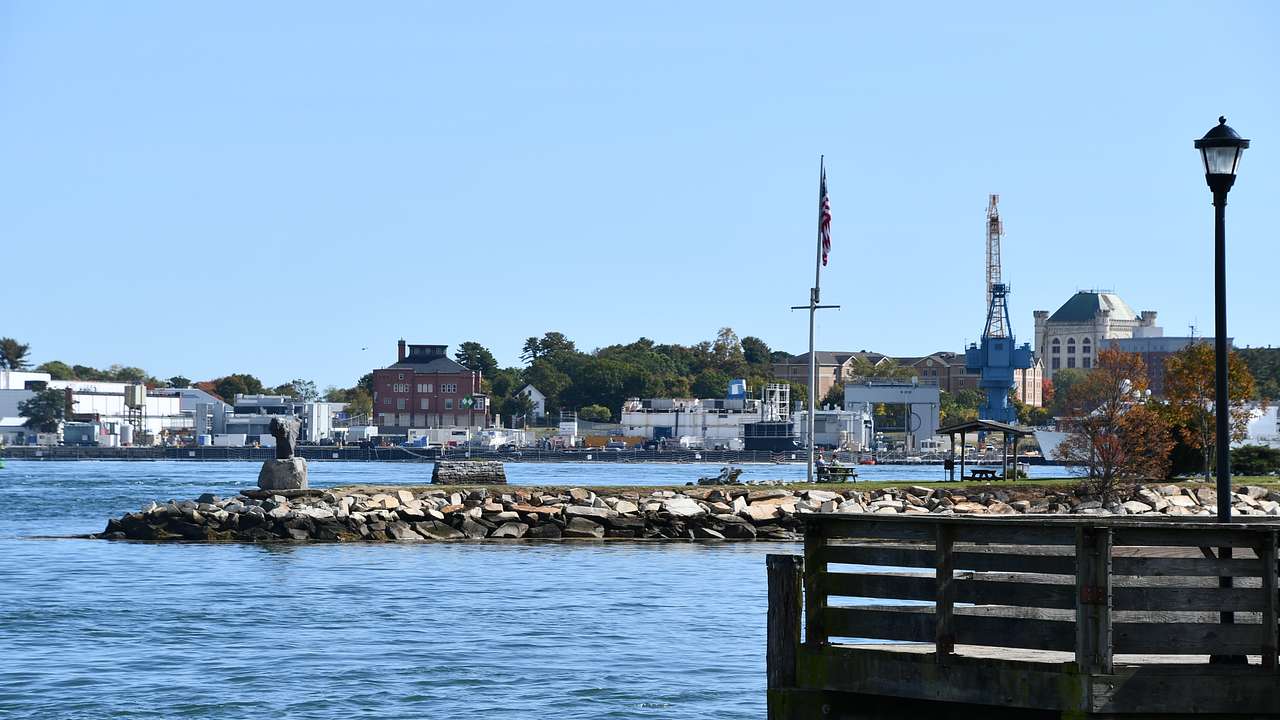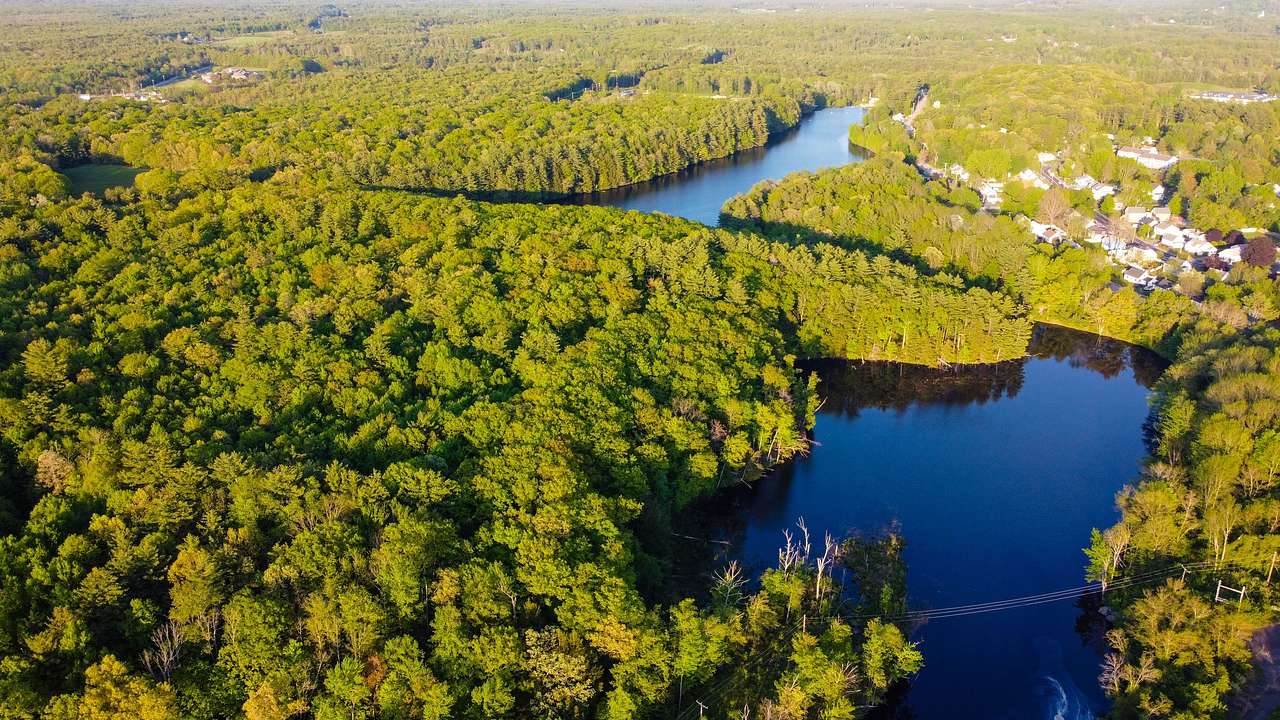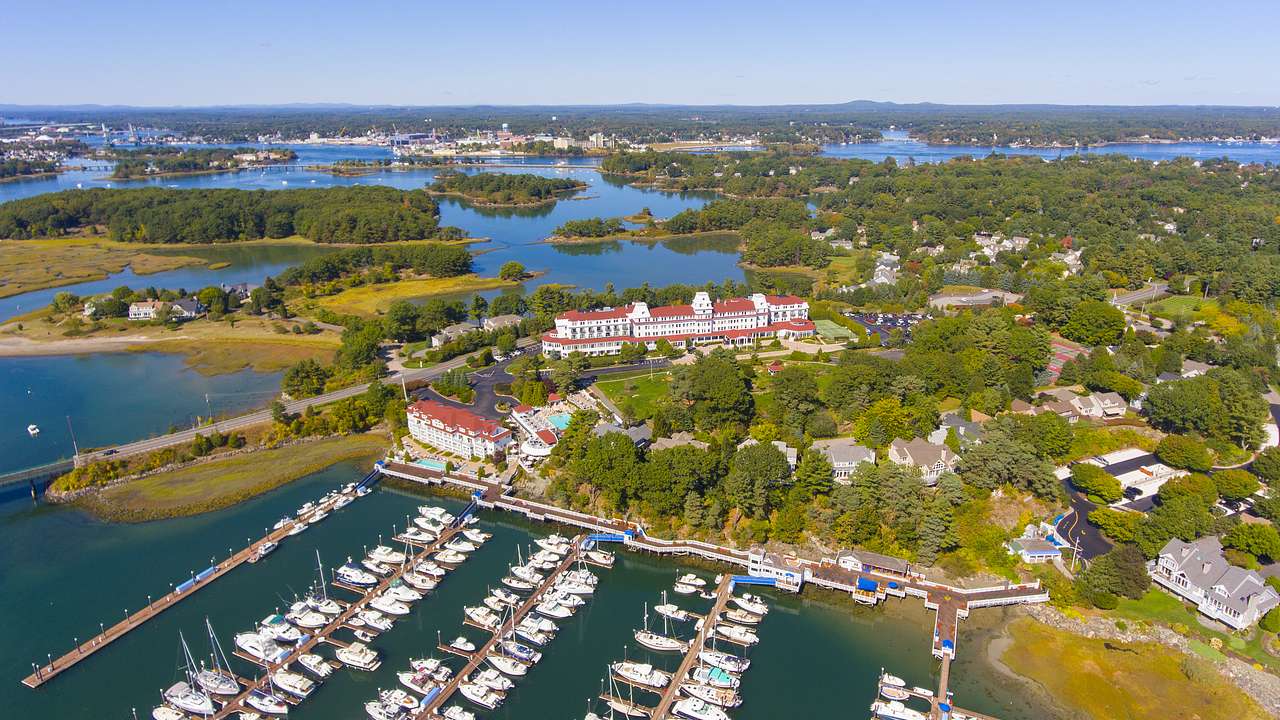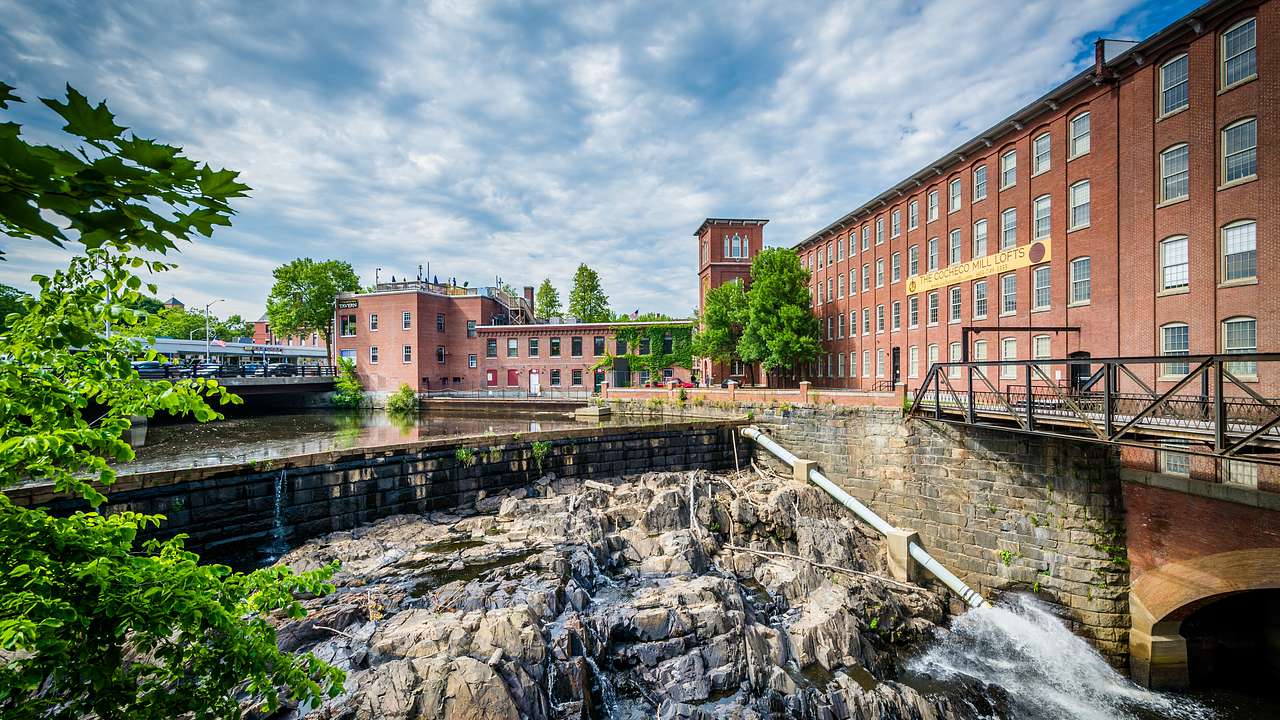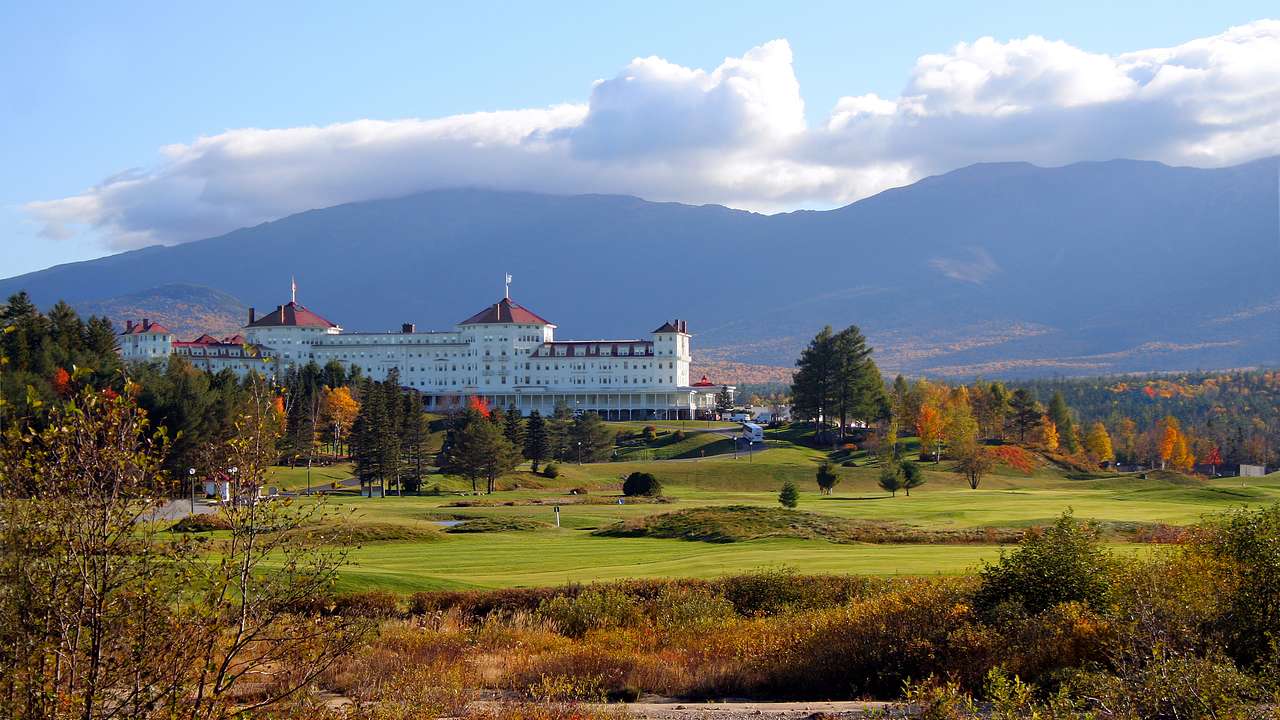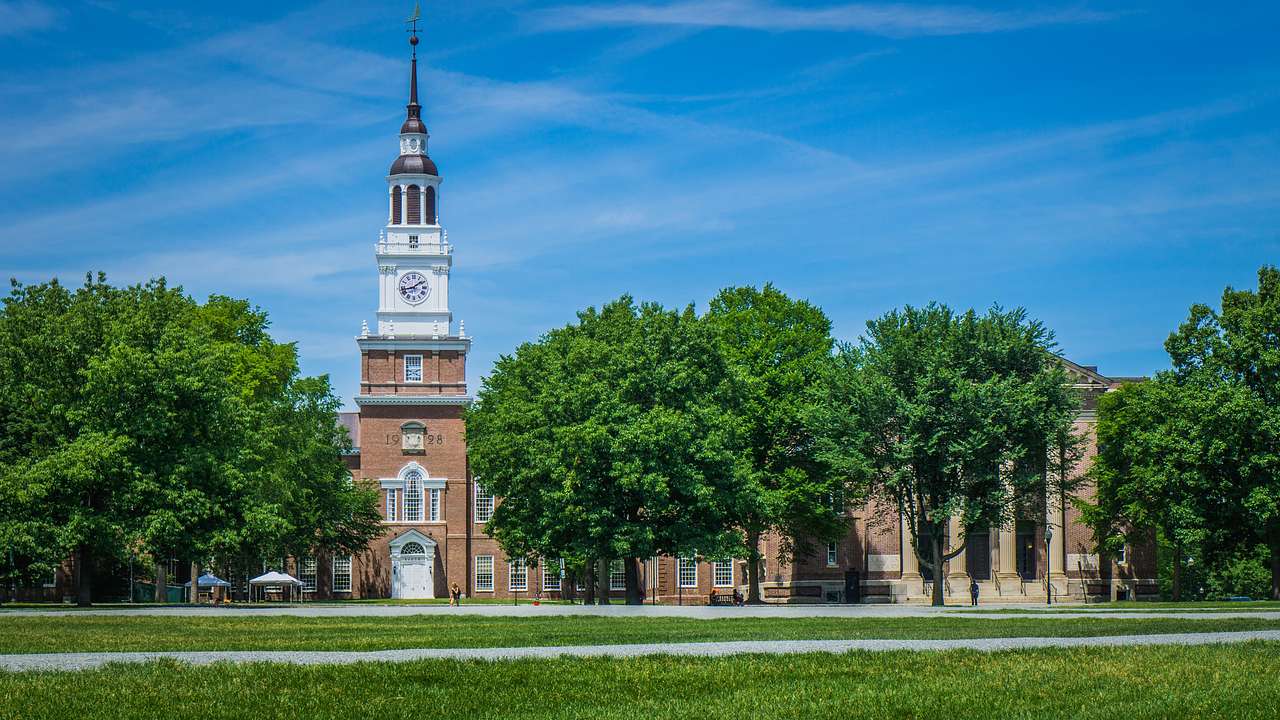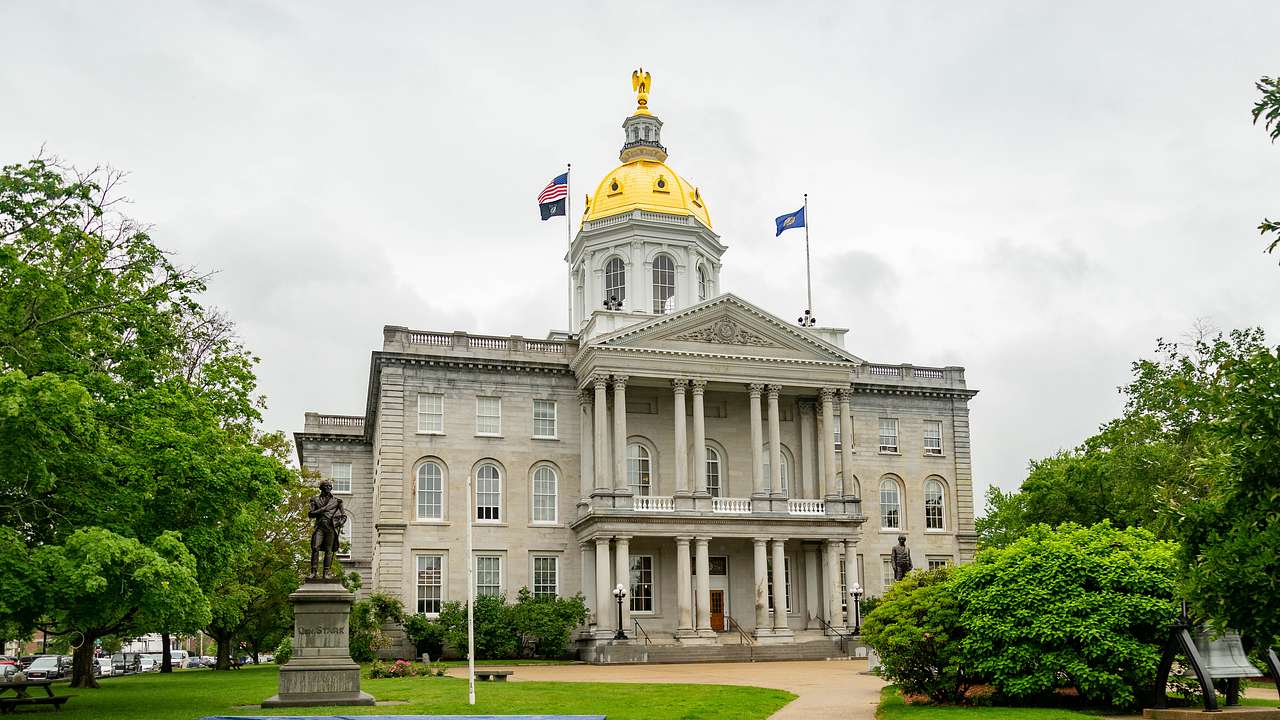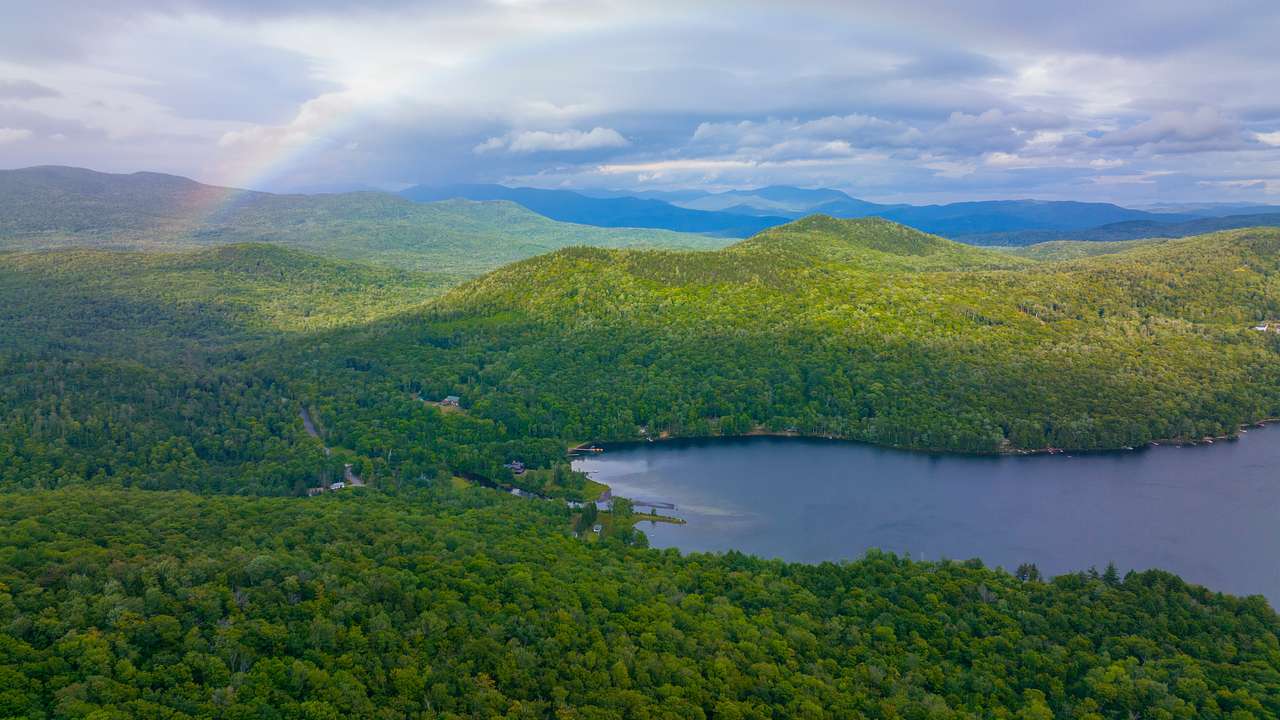50 Interesting & Fun Facts About New Hampshire State
Destguides may receive commissions from purchases made through affiliate links in this article.

New Hampshire, located within New England in the northeastern United States, was one of the original Thirteen Colonies. It became the ninth state when its convention delegates ratified the United States Constitution in 1778.
New Hampshire has a long past, with its first inhabitants settling around 13,000 years ago. Europeans established their first permanent settlements in 1623. With so much history, you can discover many interesting facts about New Hampshire state.
From being one of the few states without a sales tax to the original home of the Budweiser Clydesdales, the more facts you learn about New Hampshire, the more you'll want to keep reading. Whether you're a lifelong resident or simply planning a vacation, New Hampshire has much to offer for such a small state!
Once you start reading through these 50 fun New Hampshire facts, you'll find it difficult to stop until you finish the last one.
50 New Hampshire State Facts
-
New Hampshire Fun Facts
- The New Hampshire state nickname is the Granite State
- The 14th President of the United States, Franklin Pierce, was born in Hillsborough
- The Merrimack River provides water for more than a half-million people
- The Piscataqua River separates New Hampshire and Maine
- The nation's first modern public library was founded in Peterborough
- There's a reason New Hampshire's state flag is blue, maybe
- The Kancamagus Highway is one of the most scenic drives in the state
- You won't pay sales tax on purchases in New Hampshire
- New Hampshire has covered bridges still in use
- America's first primary of every presidential election is held in New Hampshire
-
Funny Facts About New Hampshire
- New Hampshire's state bird, the purple finch, isn't really purple
- The Cog Railway on Mount Washington is powered by biodiesel
- Freelan Stanley took the first automobile up Mount Washington
- Wolfeboro, New Hampshire, is known as The Oldest Summer Resort in America
- The traveling Budweiser Clydesdales were initially based in Merrimack, New Hampshire
- Chicken tenders originated at the Puritan Backroom in Manchester
- New Hampshire's Pine Tree Riot may have been the inspiration for the Boston Tea Party
- Competitive paintball got its start in Henniker, New Hampshire
- You'll have good luck if New Hampshire's state insect lands on you
-
Interesting Facts About New Hampshire
- A wind gust of 231 miles per hour was recorded in New Hampshire
- The 410-mile Connecticut River actually starts in New Hampshire
- 72-square-mile Lake Winnipesaukee is the largest lake in New Hampshire
- There are around 100,000 white-tailed deer in New Hampshire
- New Hampshire teacher Christa McAuliffe was on the ill-fated Challenger shuttle
- New Hampshire has the most above-treeline miles of the Appalachian Trail
- The state seal of New Hampshire has an error
- New Hampshire has a program to improve French within the tourism industry
- New Hampshire is the fourth-largest state in New England
- The purple lilac is the state flower of New Hampshire
- The white birch is the state tree of New Hampshire
- The coastal waters around New Hampshire are still great for fishing
- The Karner Blue is the state butterfly of New Hampshire
- The Salmon Falls River provides hydroelectric power to NH towns
-
Cool Facts About New Hampshire
- McDonald's founders were born in Manchester, New Hampshire
- Astronaut Alan Shepard was born in Derry, New Hampshire
- New Hampshire is home to the oldest man-made tourist attraction in the United States
- Mount Washington is the highest point in New Hampshire
- New Hampshire's shoreline is the shortest of any coastal state
- New Hampshirite Sarah Josepha Hale helped Thanksgiving become a federal holiday
-
New Hampshire History Facts
- New Hampshire played an important role in establishing international peace
- New Hampshire was the 9th State to Join the United States in 1778
- New Hampshire's first European settlers were fishermen
- Captain John Mason named New Hampshire in 1629
- Suffragist Marilla Ricker brought women's rights to the forefront in New Hampshire
- Native Americans lived in New Hampshire 13,000 years ago
- The World Bank and International Monetary Fund were created in New Hampshire
- Important Facts About New Hampshire
New Hampshire Facts Video
Check out our highlights video of New Hampshire facts.
New Hampshire Fun Facts
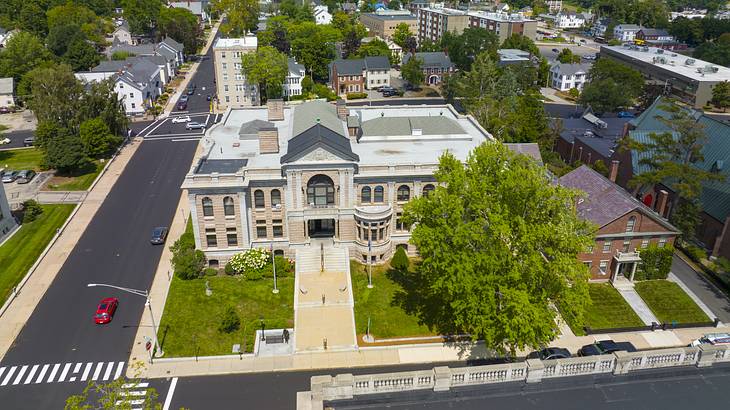
The New Hampshire state nickname is the Granite State
Take a drive through the countryside, and you'll quickly notice why the Granite State is the New Hampshire state nickname. Extensive granite formations dot the landscape, and quarries are numerous across the state.
While New Hampshire might not be among the largest granite producers today, its rock has been used to construct famous structures like the Library of Congress and the Jefferson Memorial.

The 14th President of the United States, Franklin Pierce, was born in Hillsborough
The only United States President from New Hampshire, Franklin Pierce, was born in the town of Hillsborough in 1804. After his presidency, Pierce returned to Concord, New Hampshire, where he passed away in 1869.
As the 14th President, pro-slavery Pierce signed the Kansas-Nebraska Act in 1854, this repealed the Missouri Compromise and signaled the beginning of the Bleeding Kansas conflict, regarded as the predecessor of the American Civil War.

The Merrimack River provides water for more than a half-million people
Beginning in the city of Franklin in central New Hampshire, the Merrimack River runs for 115 miles before emptying into the Gulf of Maine at Newburyport, Massachusetts.
The river, which acts as a water source for more than 700,000 residents in the region, faced pollution through much of New Hampshire's past but has seen its water quality improve significantly since the 1970s.

The Piscataqua River separates New Hampshire and Maine
Although it only runs for 12 miles, the tidal Piscataqua River separates the states of New Hampshire and Maine. It's also the watershed for nearly 1,500 square miles of land.
The mouth of the Piscatagua River feeds into the Atlantic Ocean at Portsmouth, which serves as a vital hub for commercial fishing and lobstering.
The nation's first modern public library was founded in Peterborough
One of the most interesting facts about New Hampshire's history is that the town of Peterborough is home to the first modern public library in the United States.
The Peterborough Town Library started in 1833 and was the country's first taxpayer-funded, free-to-use book service. However, the library didn't get its own building until 1893, with the books stored at various local businesses until then.
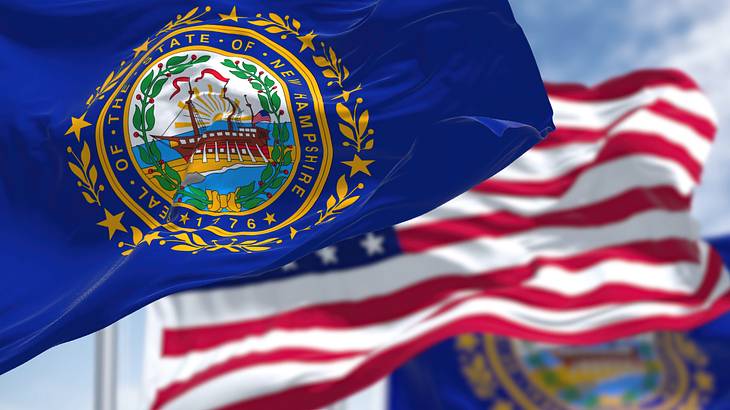
There's a reason New Hampshire's state flag is blue, maybe
The New Hampshire state flag was adopted in 1909 and features the state emblem on a dark blue background. Circling the emblem is a wreath intertwined with nine stars signifying New Hampshire's status as the ninth state to join the United States.
As for the blue background, most residents claim that it represents the ocean and its crucial role in New Hampshire's history.
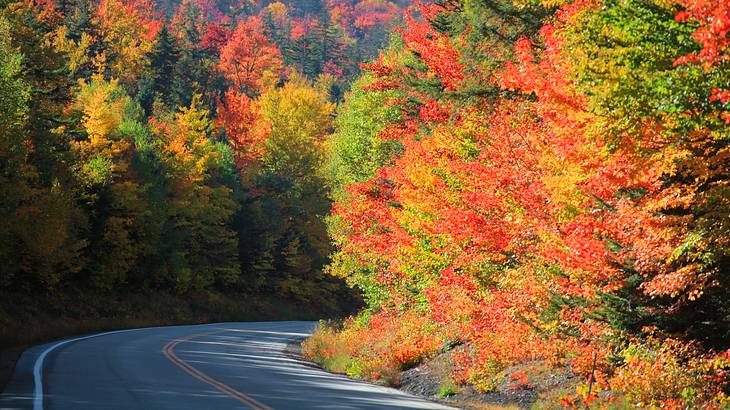
The Kancamagus Highway is one of the most scenic drives in the state
Spanning nearly 35 miles, driving along the Kancamagus Highway provides some of the best views that New Hampshire has to offer, especially in the fall when the leaves are changing colors.
Recognized as a National Scenic Byway, the Kancamagus Highway, or just the Kanc as it's called locally, runs from Lincoln in the west to Conway in the east.
You won't pay sales tax on purchases in New Hampshire
It could be a testament to the "Live Free or Die" attitude that embodies New Hampshire's official motto, but you won't pay sales tax on any purchases in the state.
New Hampshire is just one of five states in the US with no sales tax. Speaking of taxes, New Hampshire doesn't have a state income tax either.
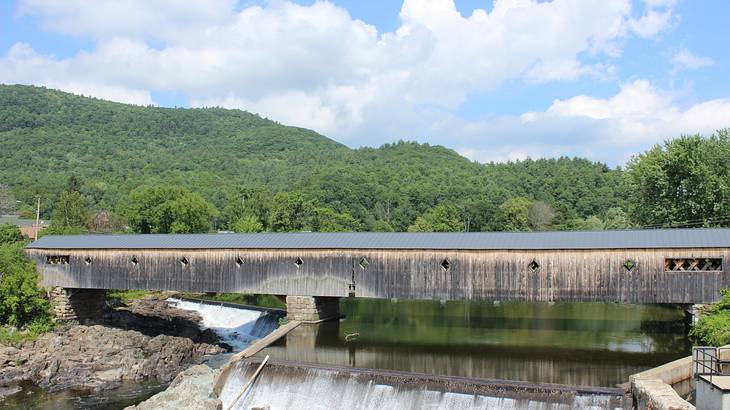
New Hampshire has covered bridges still in use
Although they may seem like a reminder of days long past, New Hampshire still has 60 covered bridges in operation.
The state is home to the oldest covered bridge, Haverhill-Bath, and the nation's longest, the 460-foot Cornish-Windsor covered bridge, which spans the Connecticut River.
America's first primary of every presidential election is held in New Hampshire
Out of all the fun facts on New Hampshire, one of the most interesting is that state law requires New Hampshire to hold the first presidential primary election at least seven days before any other state in the nation. Politicos consider the results of New Hampshire a good indicator of how the rest of the election season will go.
Funny Facts About New Hampshire
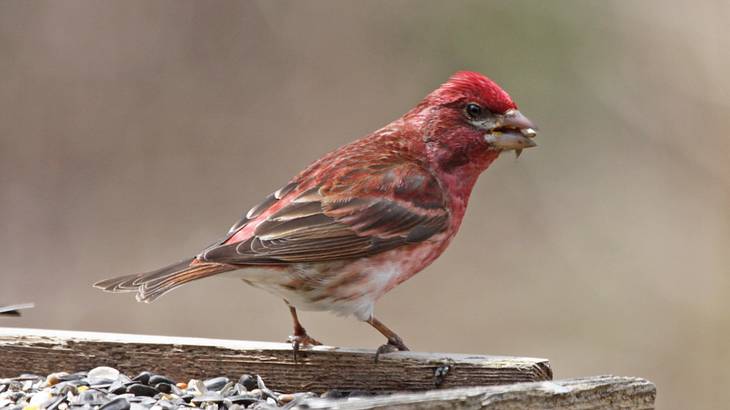
New Hampshire's state bird, the purple finch, isn't really purple
The purple finch has been the New Hampshire state bird since 1957. But if you're keeping your eyes peeled for a fluttering purple fowl, you'll probably miss it. That's because the purple finch, found year-round throughout New Hampshire, is more of a pinkish rose color.
Why is it called "purple, you ask?" Well, the name originates from the Latin word "purpureus," which better translates to crimson. There aren't any purple-colored birds in New Hampshire.
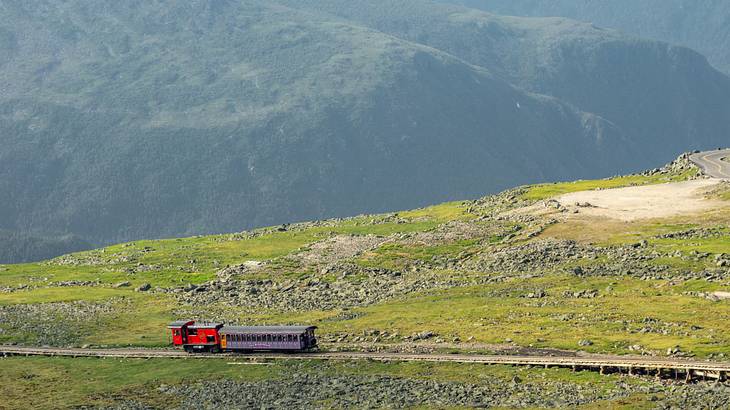
The Cog Railway on Mount Washington is powered by biodiesel
First put into service in 1869, the locomotives making the trip up the Cog Railway to the summit of Mount Washington have historically been powered by steam. But since 2008, the railway has been expanding its fleet of biodiesel-fueled trains.
Currently operating with seven biodiesel-fueled and two steam-powered locomotives, the Cog Railway remains one of the most famous landmarks in New Hampshire.
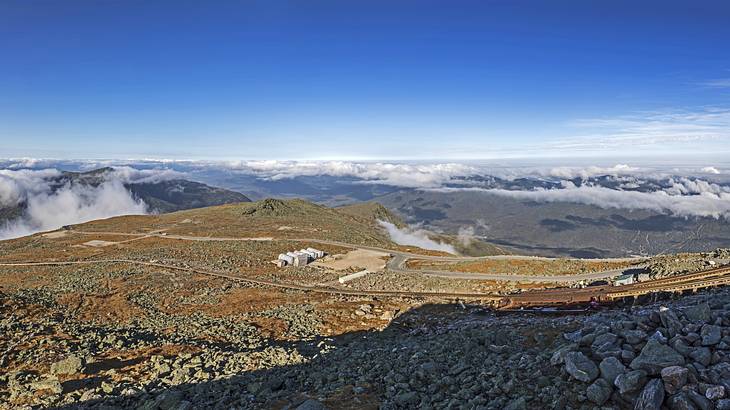
Freelan Stanley took the first automobile up Mount Washington
Freelan Oscar Stanley, the co-founder of the Stanley Motor Carriage Company, took his Stanley Steamer up the Mount Washington Auto Road (then called the Mount Washington Carriage Road) in 1899.
With his wife Flora in the passenger seat, Stanley's steam-powered automobile became the first automobile to make the climb up Mount Washington, traversing the 7.6-mile road in around two hours.

Wolfeboro, New Hampshire, is known as The Oldest Summer Resort in America
Sitting along the bank of Lake Winnipesaukee, the small town of Wolfeboro is considered to be The Oldest Summer Resort in America.
Incorporated in 1770, Wolfeboro gained popularity after John Wentworth, Colonial Governor at the time, built his summer estate in 1771. Since then, Wolfeboro has been a vacation destination for princes, presidents, and regular visitors from across New England.

The traveling Budweiser Clydesdales were initially based in Merrimack, New Hampshire
Today there are several teams, or hitches, as they're called, of Budweiser Clydesdales performing around the country and internationally. But the company's first promotional horses were housed in Merrimack, New Hampshire. Even today, Merrimack is one of three year-round locations where visitors can view the Clydesdales hitches.
Chicken tenders originated at the Puritan Backroom in Manchester
Alright, they may not have been the first to bread and fry chicken strips, but the Puritan Backroom in Manchester, New Hampshire, has the claim to fame of being the first restaurant to name the dish chicken tenders. Added to their menu in 1974, the chicken tenders were a big hit, with the term gaining international usage.
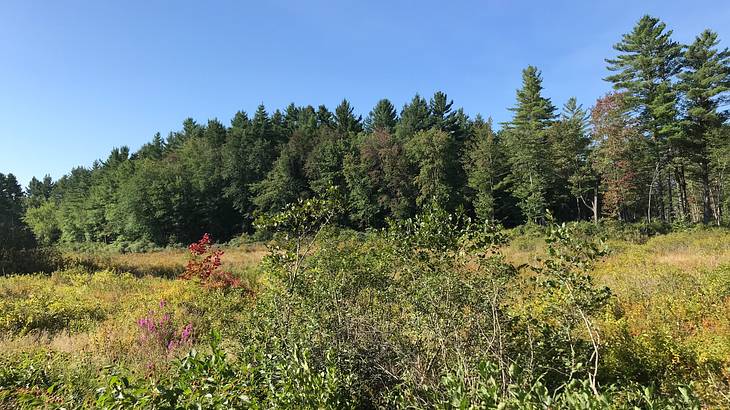
New Hampshire's Pine Tree Riot may have been the inspiration for the Boston Tea Party
In April of 1772, more than a year before the Boston Tea Party, mill owners and residents of Weare, New Hampshire, held a protest in response to being fined for cutting down white pine trees claimed as property of the English Crown. The riot ended with the sheriff and deputy being run out of town, much to the pleasure of the locals.
Competitive paintball got its start in Henniker, New Hampshire
The first paintball marker was created in the 1960s by the Nelson Paint Company to tag trees to be cleared. But in 1981, in Henniker, New Hampshire, a dozen friends got together with Nel-Spot 007 paintball markers for the first competitive paintball match. The new sport gained widespread attention following a Sports Illustrated article later that year.

You'll have good luck if New Hampshire's state insect lands on you
Here's some creepy crawly information about New Hampshire: they have a state insect, the ladybug. A group of students in Concord came up with the idea, and in 1977, the New Hampshire legislature voted to make the ladybug the official insect of New Hampshire. Interestingly, it's often considered an omen of good luck if one lands on you.
Interesting Facts About New Hampshire
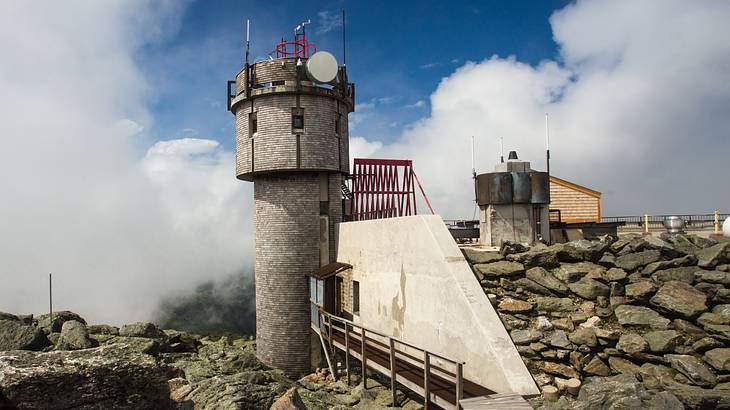
A wind gust of 231 miles per hour was recorded in New Hampshire
Wind speeds reaching a highest wind speed of 231 miles per hour were recorded at the Mount Washington Observatory in New Hampshire on April 12, 1934. Mount Washington still holds the record for the fastest recorded winds in the northern hemisphere.
New Hampshire held the record for the highest gust ever recorded for more than 60 years until 1996, when a 253 miles per hour gust was measured on Barrow Island in Australia.
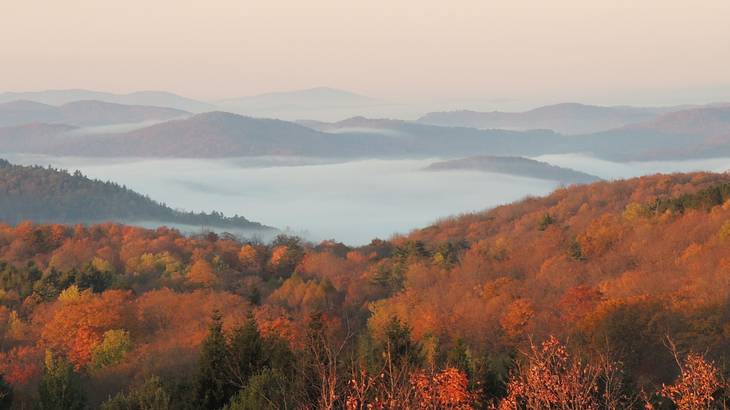
The 410-mile Connecticut River actually starts in New Hampshire
Despite what the name would have you believe, the 410-mile Connecticut River starts in northern New Hampshire. The longest river in New England begins from the Fourth Connecticut Lake just south of the United States border with Canada. "Connecticut" originated from the native Pequot's "quinetucket," which translates to "long tidal river" in English.
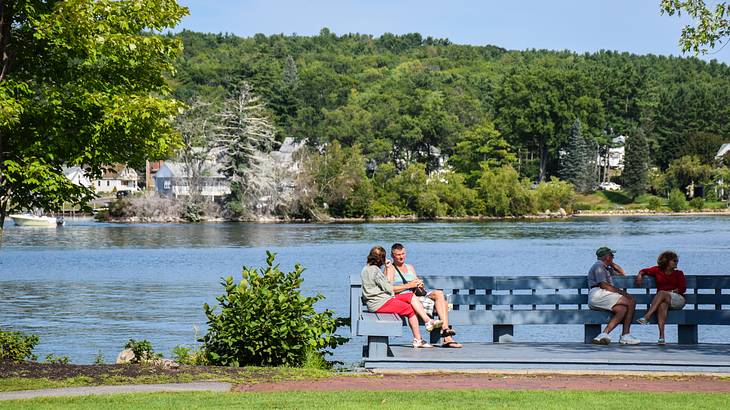
72-square-mile Lake Winnipesaukee is the largest lake in New Hampshire
Covering a massive 72 square miles, Lake Winnipesaukee is a popular year-round holiday destination in central New Hampshire at the foot of the White Mountains.
Locals and tourists flock to Lake Winnipesaukee in the summer for swimming, sunbathing, and boating. During the cold winter months, Lake Winnipesaukee is known for snowshoeing, cross-country skiing, and ice fishing.
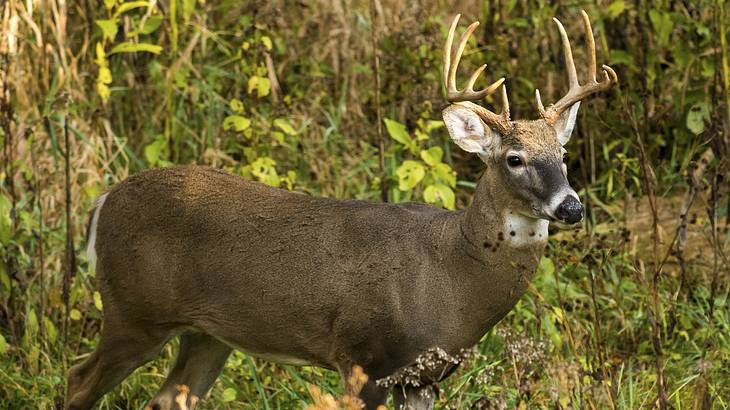
There are around 100,000 white-tailed deer in New Hampshire
The white-tailed deer has long been intertwined with New Hampshire. Native peoples used them for food and clothing, and when the first Europeans arrived in the 1620s, the white-tailed deer aided in the survival of the original settlements.
Since 1983, the white-tailed deer has been the official state animal of New Hampshire, with estimates putting the current population at around 100,000.
New Hampshire teacher Christa McAuliffe was on the ill-fated Challenger shuttle
Concord, New Hampshire, teacher Christa McAuliffe was celebrated nationwide as the first civilian and teacher selected as an astronaut in the Challenger program.
Unfortunately, New Hampshire facts and history don't always end well, as McAuliffe and the other astronauts onboard perished when the Challenger shuttle exploded shortly after launch on January 28, 1986.
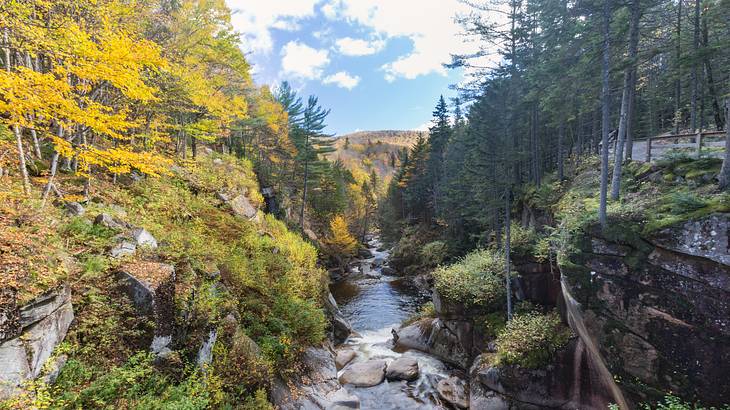
New Hampshire has the most above-treeline miles of the Appalachian Trail
The Appalachian Trail is one of the most difficult hikes in the United States. The entire route traverses 14 states and covers a total of nearly 2,200 miles.
Almost three million hikers trek sections of the Appalachian Trail each year, with around 750 completing its entire span. The length through New Hampshire has more above-treeline miles than anywhere else.
The state seal of New Hampshire has an error
New Hampshire's current state seal was created in 1784 and depicts the Raleigh, a frigate built in Portsmouth in 1776 as one of the first 13 warships for the newly-formed United States Navy.
The problem with the state seal, which features the 1776 date the Raleigh was constructed, is that the American flag with stars and stripes depicted on the ship wasn't designed until 1777.
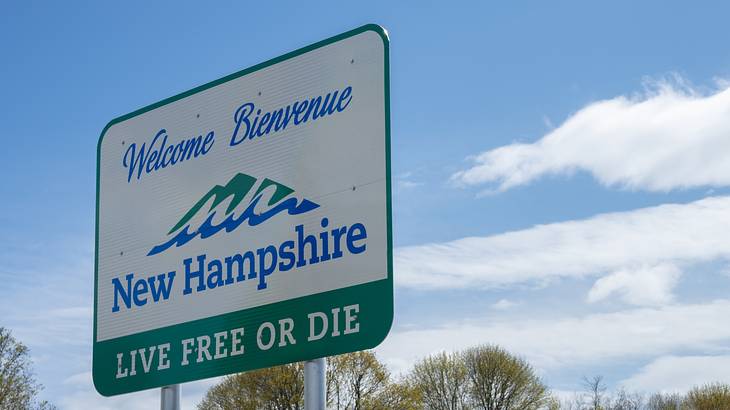
New Hampshire has a program to improve French within the tourism industry
New Hampshire shares 58 miles of its northern border with the Canadian province of Quebec, where French is the official language. Each year, more than 200,000 French-speaking Quebecois travel south to visit the state, with some struggling a little to communicate in English.
To combat this problem, Plymouth State University launched the Bienvenue au NH campaign, which includes .improving basic French comprehension among service industry workers.
New Hampshire is the fourth-largest state in New England
There may only be six states in New England, but that doesn't stop New Hampshire from bragging about being the fourth largest.
Spanning 9,349 square miles, New Hampshire is dwarfed by Maine's 35,380 square miles, the largest of the New England states. But it's far more extensive than New England's smallest state, Rhode Island, covering a mere 1,545 square miles.

The purple lilac is the state flower of New Hampshire
The purple lilac has been the New Hampshire state flower since 1919, but its local origins trace back to 1750. New Hampshire's first purple lilacs have been credited to Governor Benning Wentworth, who brought some over from England and planted them outside his home in Portsmouth. Today, purple lilacs are commonplace in yards throughout the state.
The white birch is the state tree of New Hampshire
Found throughout all state regions, the white birch, whose Latin name is Betula papyrifera, has been the New Hampshire state tree since 1947. The white birch is unique in the state, instantly recognizable by its vibrant white bark. The species' light-colored bark evolved as a way to reflect the sun and protect the tree from cracking during the winter.

The coastal waters around New Hampshire are still great for fishing
In 1623, the first European settlers came to New Hampshire to establish a fishing village. Although the state may have changed significantly since then, the extent of the fishing hasn't.
The coastal waters around New Hampshire offer terrific saltwater fishing. Striped bass, the official saltwater game fish of New Hampshire, is the biggest target for anglers, but other common catches include flounder and bluefish.
The Karner Blue is the state butterfly of New Hampshire
The Karner Blue was designated the state butterfly of New Hampshire in 1992. Found in the state's southern region, the Karner Blue is listed as endangered by the United States Fish and Wildlife Service.
In 2000, old barracks at Concord's New Hampshire Army National Guard Base were converted into a Karner Blue breeding center, which has released more than 35,000 healthy butterflies to date.
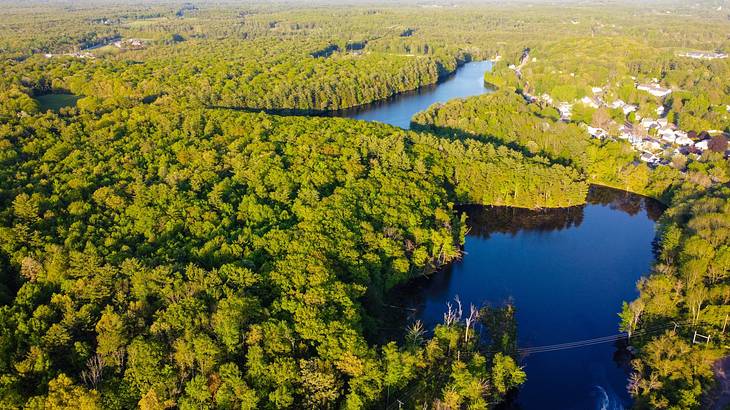
The Salmon Falls River provides hydroelectric power to NH towns
Salmon Falls River is a tributary of the Piscataqua River and flows through Maine and New Hampshire. Interestingly, the river provides hydroelectric power to nearby New Hampshire towns. These towns include Somersworth and North and East Rochester.
Cool Facts About New Hampshire

McDonald's founders were born in Manchester, New Hampshire
Although most people associate McDonald's early growth with Ray Kroc, one of the cool facts about New Hampshire history is that the restaurant's founders, Richard and Mac McDonald, were born in Manchester, New Hampshire.
After graduating high school, the McDonald brothers moved to California and ended up in the food business in 1937. In 1940 they opened the first McDonald's in San Bernardino, California, before expanding the brand and eventually selling it to Kroc in 1955.
Astronaut Alan Shepard was born in Derry, New Hampshire
Derry, New Hampshire, was the birthplace of famed astronaut Alan Shepard, the first American to travel to space. Shepard's ties to the area run deep; his great-grandfather settled there in 1855.
In 2000, the 36-acre homestead was donated to the city of Derry as the Shepard Family Conservation Area, also referred to as Shepard Park.
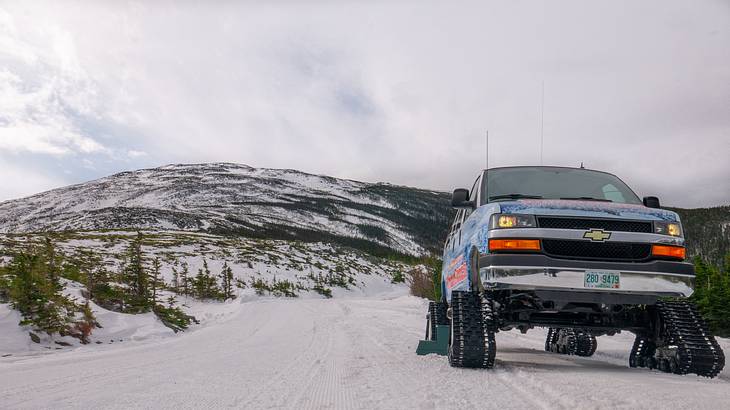
New Hampshire is home to the oldest man-made tourist attraction in the United States
It's easy to find interesting New Hampshire facts and information with its extensive rich history. For example, New Hampshire's Mt. Washington Auto Road is the oldest man-made tourist attraction in the United States.
Initially traversed initially by horse and wagon, the 7.6-mile road was only fully paved in 2022 despite paving beginning on some sections in the 1970s.
Mount Washington is the highest point in New Hampshire
At 6,288 feet high, Mount Washington is the highest point in New Hampshire. Mount Washington's summit is part of the White Mountains, home to a world-renowned weather research station. Visitors to the mountain can hike, drive, or take the Cog Railway to the mountain top.
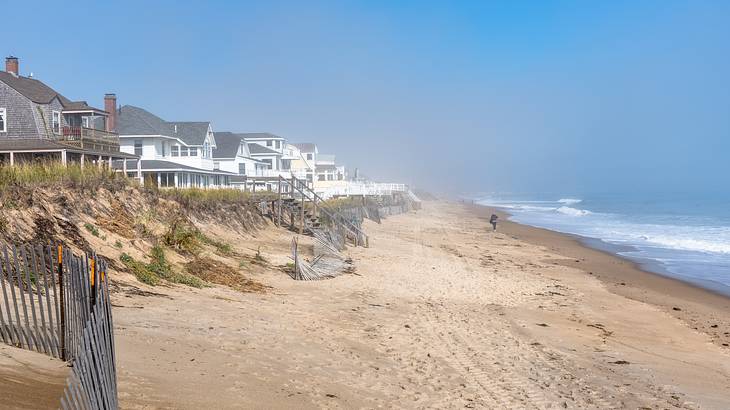
New Hampshire's shoreline is the shortest of any coastal state
According to the Congressional Research Service, New Hampshire's coast is the shortest in the US. At just 13 miles, driving from Seabrook to Portsmouth, which borders Maine, only takes half an hour.
New Hampshirite Sarah Josepha Hale helped Thanksgiving become a federal holiday
Thanksgiving had long been celebrated throughout New England, but it wasn't recognized across the nation until it became a federal holiday in 1863 thanks to the efforts of Sarah Josepha Hale from New Hampshire.
Hale, an accomplished writer and magazine editor, spent years advocating for the national celebration of Thanksgiving until her message reached President Abraham Lincoln, who declared the holiday in hopes it would ease the tensions of the ongoing Civil War.
New Hampshire History Facts

New Hampshire played an important role in establishing international peace
One of the interesting historical facts about New Hampshire is it helped to end a war. In 1905, President Theodore Roosevelt invited Russian and Japanese delegations to Portsmouth, New Hampshire, to negotiate the end of the ongoing Russo-Japanese War. After nearly a month of meetings, the Treaty of Portsmouth was signed on September 5, 1905, ending the conflict.
New Hampshire was the 9th State to Join the United States in 1778
First settled by Europeans in 1623, New Hampshire has a long history as one of the original Thirteen Colonies. But it became the 9th state in the union on June 21, 1778, when delegates at the state convention voted to ratify the United States Constitution.
That number holds extra significance as Article VII of the Constitution specifies that it takes nine states to approve any document for it to take effect.
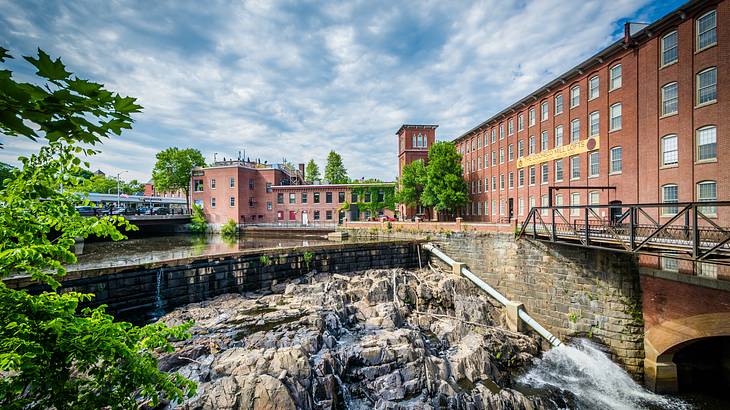
New Hampshire's first European settlers were fishermen
In 1623, David Thompson (also spelled Thomson) founded the first year-round European settlement in New Hampshire at Odiorne Point, part of present-day Rye. Thompson was granted 6,000 acres by the Council for New England to organize a fishing and trading outpost in the region.
The nearby village of Dover, still in existence today, was founded just afterward and holds the title of the oldest permanent European settlement in New Hampshire.
Captain John Mason named New Hampshire in 1629
After an earlier 1622 land grant was split in 1629, Captain John Mason, former governor of Newfoundland, named his newly awarded 450-square-mile claim, New Hampshire after his home in Hampshire, England.
Despite having never set foot on the land himself, Mason is widely regarded as the state's founder thanks to his efforts in funding and establishing settlements in the region.
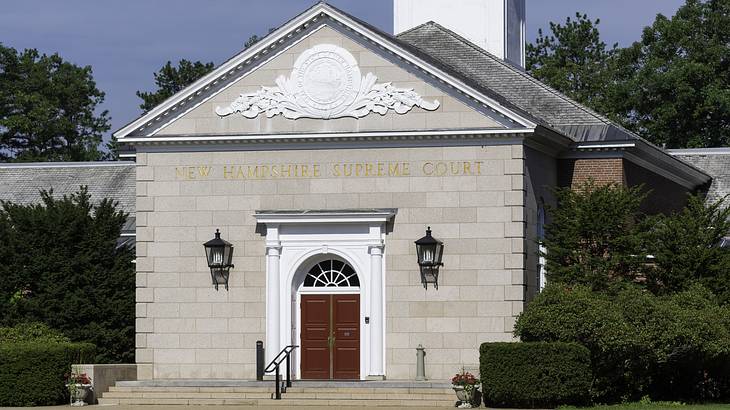
Suffragist Marilla Ricker brought women's rights to the forefront in New Hampshire
Born in New Durham in 1840, suffragist Marilla Ricker made lasting contributions to women's rights in New Hampshire.
She became the first female lawyer in the state in 1890 after petitioning the New Hampshire Bar, which initially rejected her application because of her gender. Ricker was also the first female to announce their run for governor of New Hampshire in 1910.
Native Americans lived in New Hampshire 13,000 years ago
The first Native Americans settled in present-day New Hampshire approximately 13,000 years ago. Consisting of numerous tribes, including the Sokoki, Pickwacket, and Penacook, the collective inhabitants are referred to today as the Abenaki people.
However, one of the most tragic historical facts about New Hampshire is that these tribes' numbers dwindled after the arrival of Europeans. The native population was decimated by more than 80% by 1633 due to consecutive smallpox epidemics.
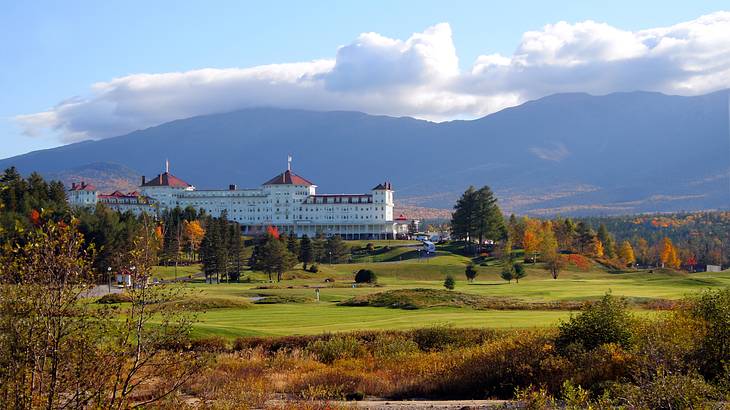
The World Bank and International Monetary Fund were created in New Hampshire
The Bretton Woods Conference, held in Bretton Woods, New Hampshire, in July 1944, sought to establish a system for international finance and development for after the end of World War II.
The Bretton Woods Conference gave birth to the International Monetary Fund and the International Bank for Reconstruction and Development, which grew into the World Bank.
Important Facts About New Hampshire
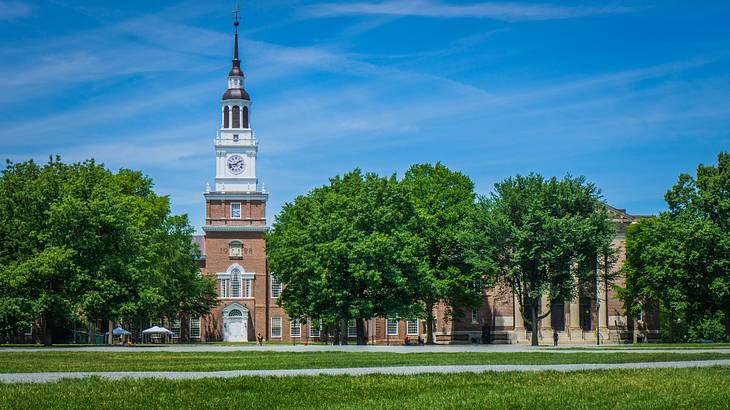
Dartmouth College is the oldest higher-learning institution in New Hampshire
Are you looking for historical facts about New Hampshire? How about the fact that Dartmouth College is the oldest university in the state? The school, founded in 1769, is New Hampshire's only university predating the American Revolution.
Famed New Hampshire politician and orator Daniel Webster graduated from Dartmouth in 1801. Other famous Dartmouth alums include poet Robert Frost and writer Theodor Geisel, better known as Dr. Seuss.
"Live Free or Die" is the state motto of New Hampshire
"Live Free or Die" became the New Hampshire state motto in 1945, but the phrase has existed far longer. First coined by the United States Revolutionary War veteran General John Stark, "Live Free or Die" is written on the state's emblem and represents the unconstrained and independent mindset of New Hampshire's residents.
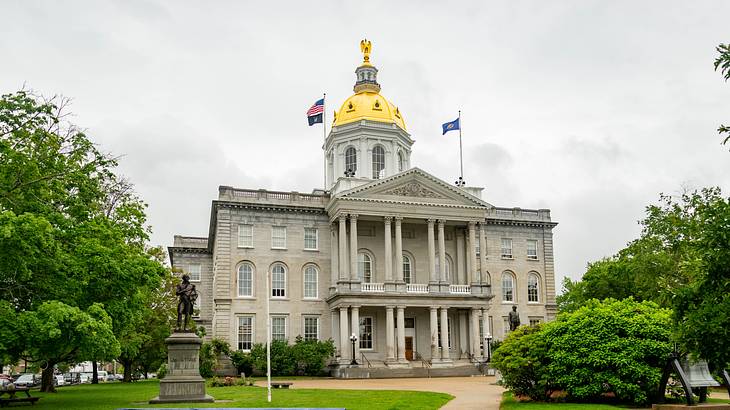
Concord is the capital of New Hampshire
Despite having a population of fewer than 50,000 residents, the city of Concord is the capital of New Hampshire. First settled by Europeans in 1727, Concord has served as New Hampshire's capital since 1808. It's not the largest city in the state, as that title belongs to the larger city of Manchester, with more than twice the population of the capital, Concord.
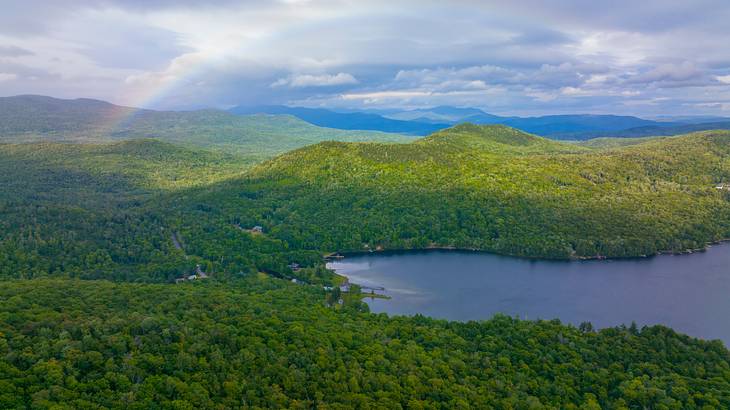
Forested areas account for 81% of all New Hampshire land
New Hampshire is ranked as the second most forested state in the country, behind only neighboring Maine. According to the United States Department of Agriculture, forested areas cover 81% of the state. This equates to a total of 4.8 million acres, with 97% of that considered timberland. Privately-owned land accounts for 73% of New Hampshire's forested areas.
In Summary
If you've made it this far, you've probably discovered a ton of new information about New Hampshire! But whether you already knew that the purple lilac is the state flower, that astronaut Alan Shepard was born in Derry, or that there are around 100,000 white-tailed deer in the state, you now have a whole lot of New Hampshire facts you can share with your friends; they will consider you an expert on the topic.
Want to keep exploring?
Subscribe for discounts on tickets and hotels and our latest guides.
Thank you for subscribing
We will be in touch soon with discounts on tickets and hotels and our latest guides.
Want to keep exploring?
Subscribe for discounts on tickets and hotels and our latest guides.
Thank you for subscribing
We will be in touch soon with discounts on tickets and hotels and our latest guides.

